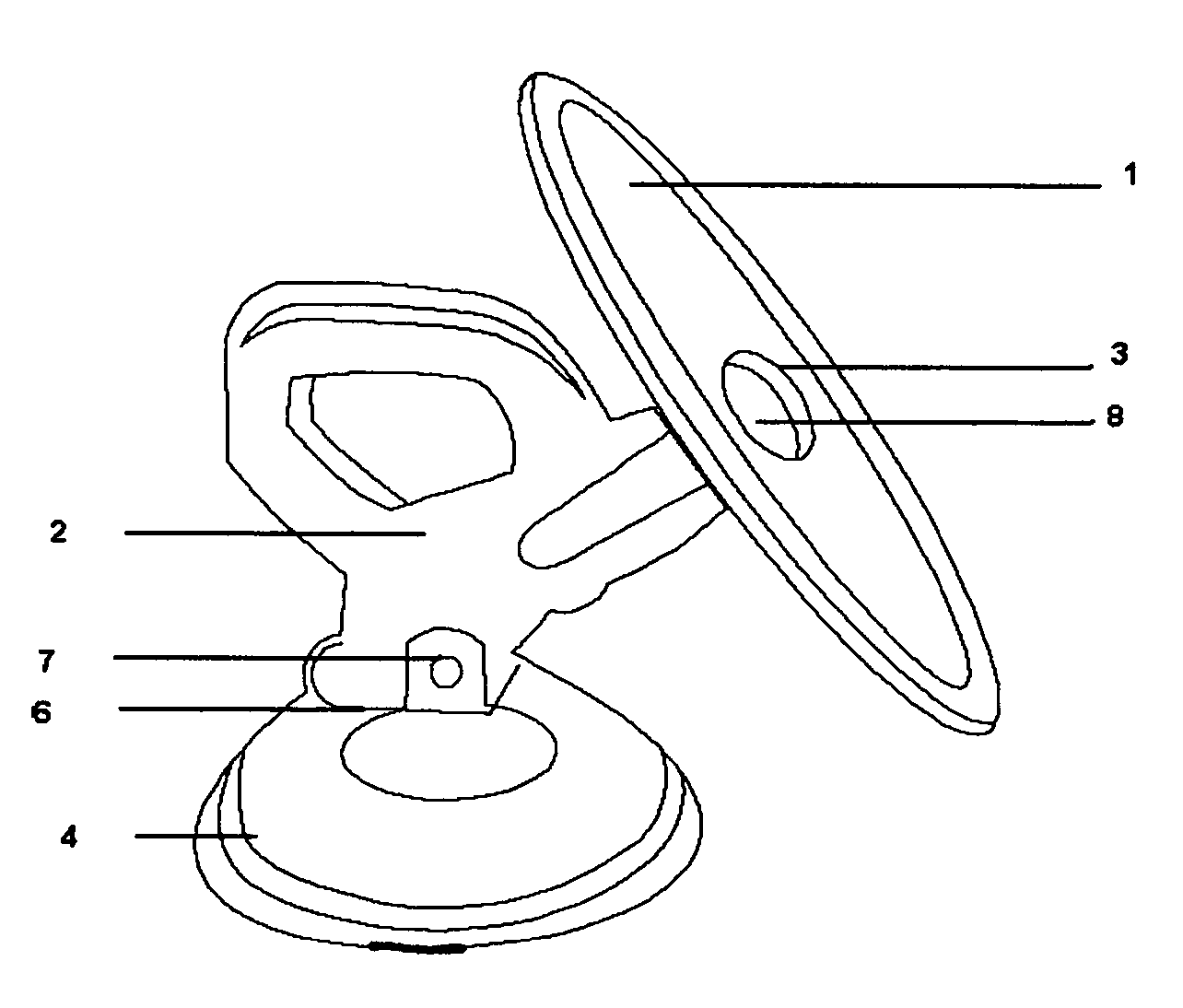Needle uncap/recap safety device
- Summary
- Abstract
- Description
- Claims
- Application Information
AI Technical Summary
Benefits of technology
Problems solved by technology
Method used
Image
Examples
Embodiment Construction
[0027]FIG. 1 shows the major advantage of this invention to be a main housing apparatus 2 that provides the enclosure for the syringe or sharp instrument protective cap or cover capture-release mechanism 8. The main housing apparatus is between 1 to 12 centimeters in length and 0.4 millimeters to 5.5 centimeters in diameter. The main housing apparatus 2 provides a means to attach the sharps protective shield 1 to the device. The shield 1 also has a raised outer-edge 5 about the parameter when placed facing the user in order to prevent the needle from slipping off the shield. The shield also offers barrier to prevent items located behind the device from being poked with the needle. The main surface of the shield 1 is generally smooth and may have an ornamental design, shape, or text applied as needed to enhance safety, performance, or usability. The shield 1 is between 3 to 17 centimeters in diameter and between 0.3 mm to 5.3 centimeters in thinness with an orifice that is between 0....
PUM
 Login to View More
Login to View More Abstract
Description
Claims
Application Information
 Login to View More
Login to View More - R&D
- Intellectual Property
- Life Sciences
- Materials
- Tech Scout
- Unparalleled Data Quality
- Higher Quality Content
- 60% Fewer Hallucinations
Browse by: Latest US Patents, China's latest patents, Technical Efficacy Thesaurus, Application Domain, Technology Topic, Popular Technical Reports.
© 2025 PatSnap. All rights reserved.Legal|Privacy policy|Modern Slavery Act Transparency Statement|Sitemap|About US| Contact US: help@patsnap.com



